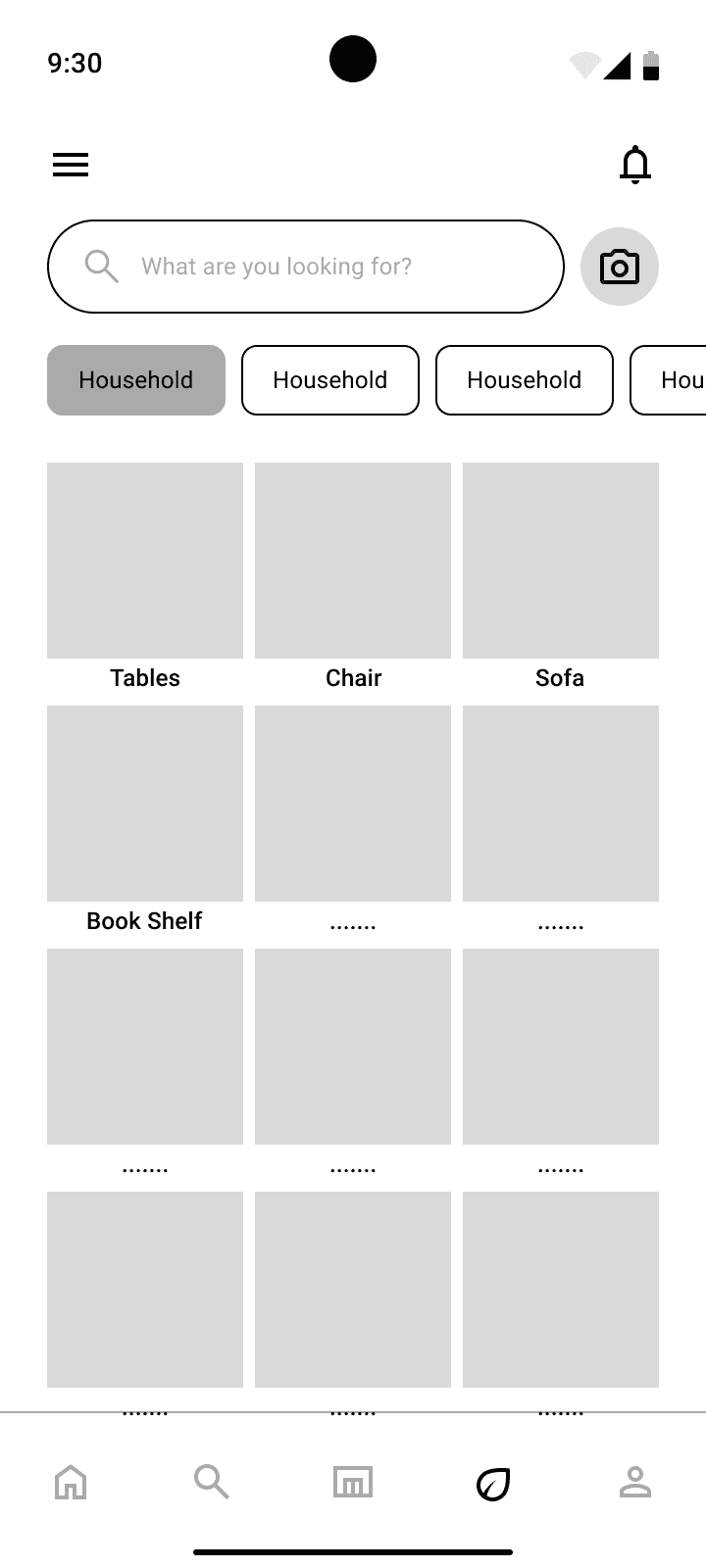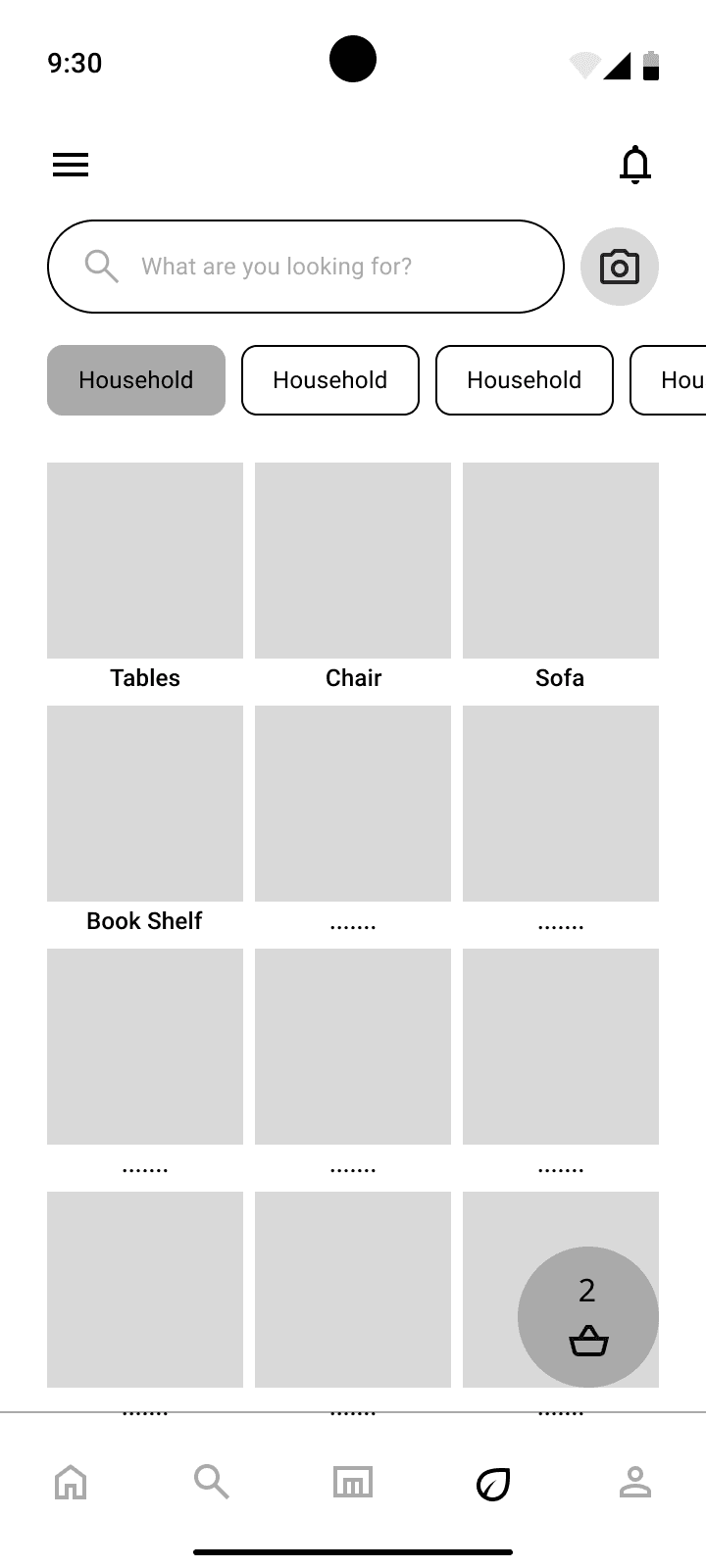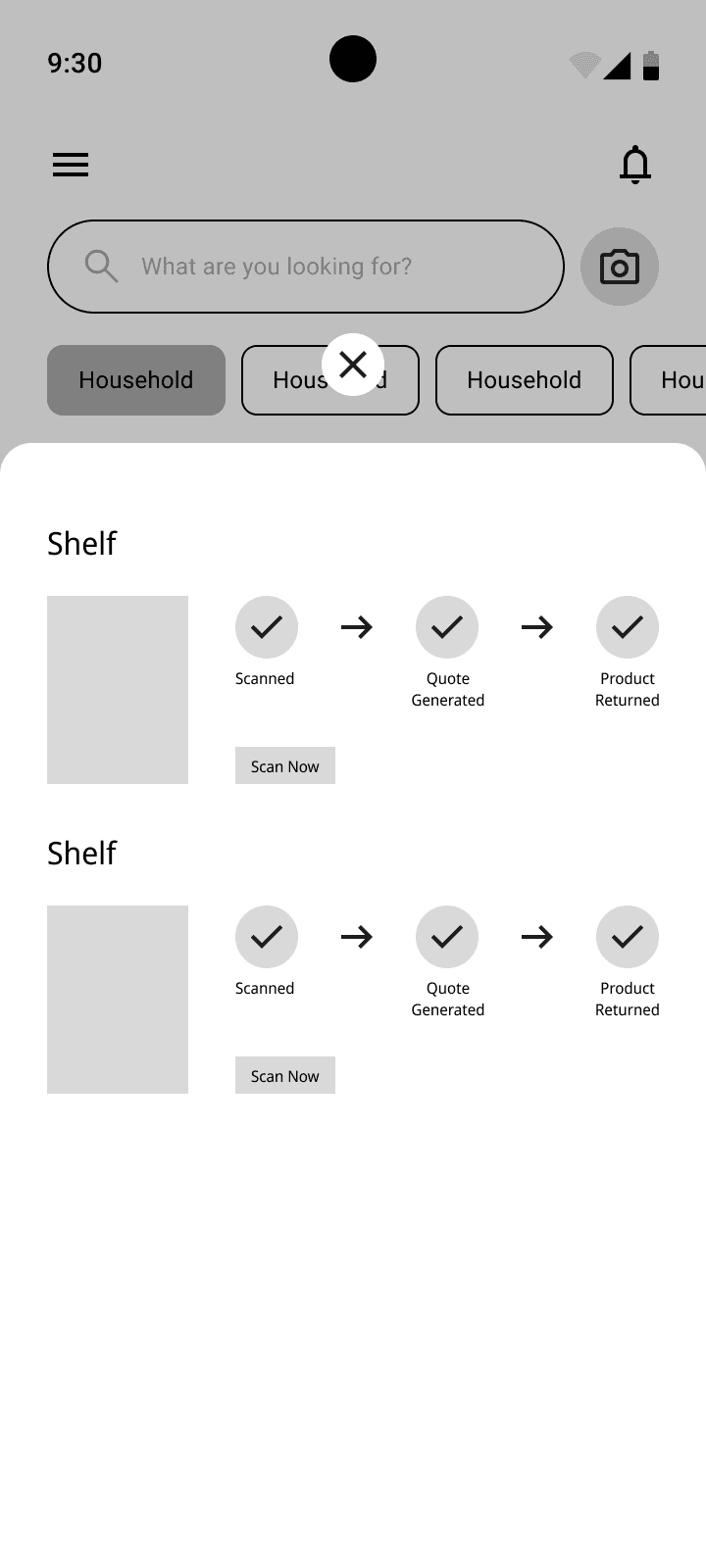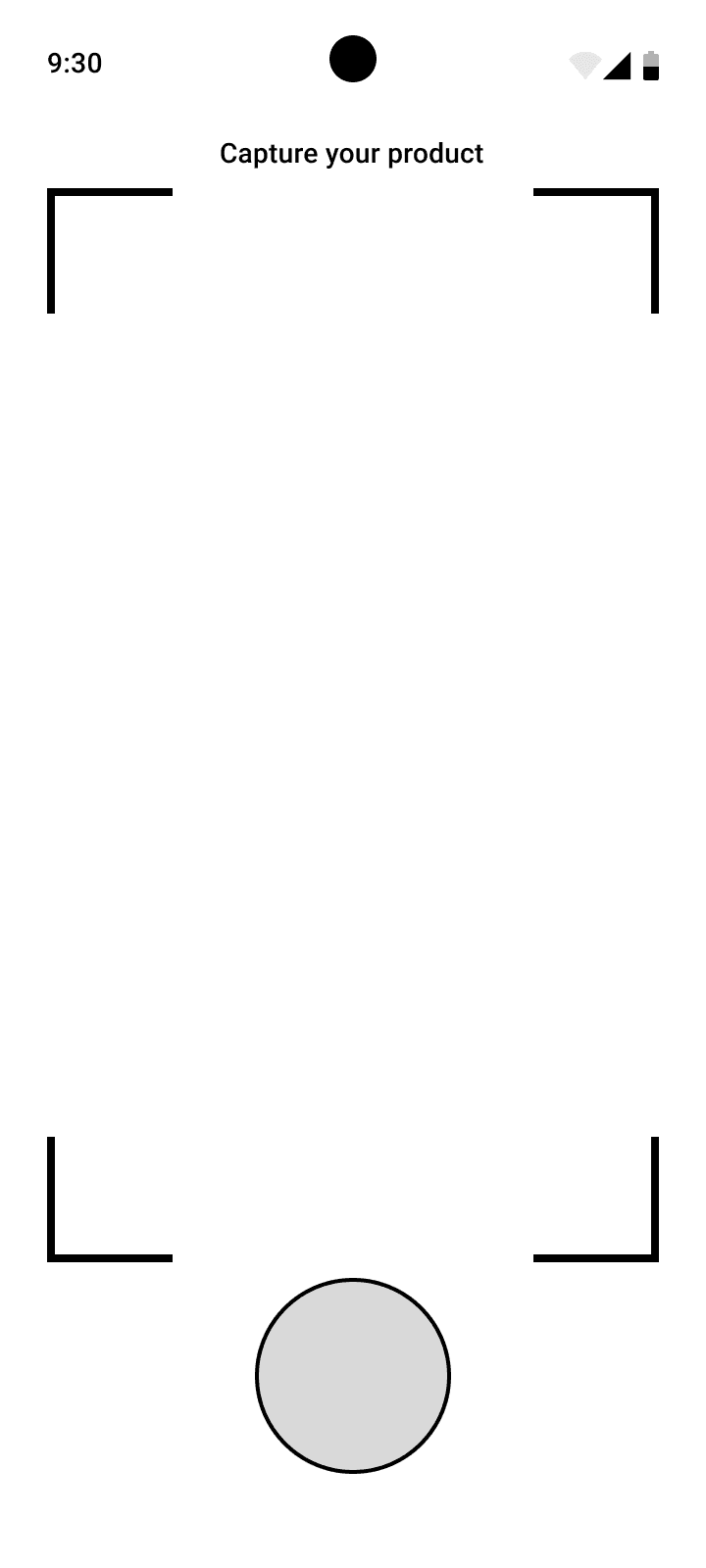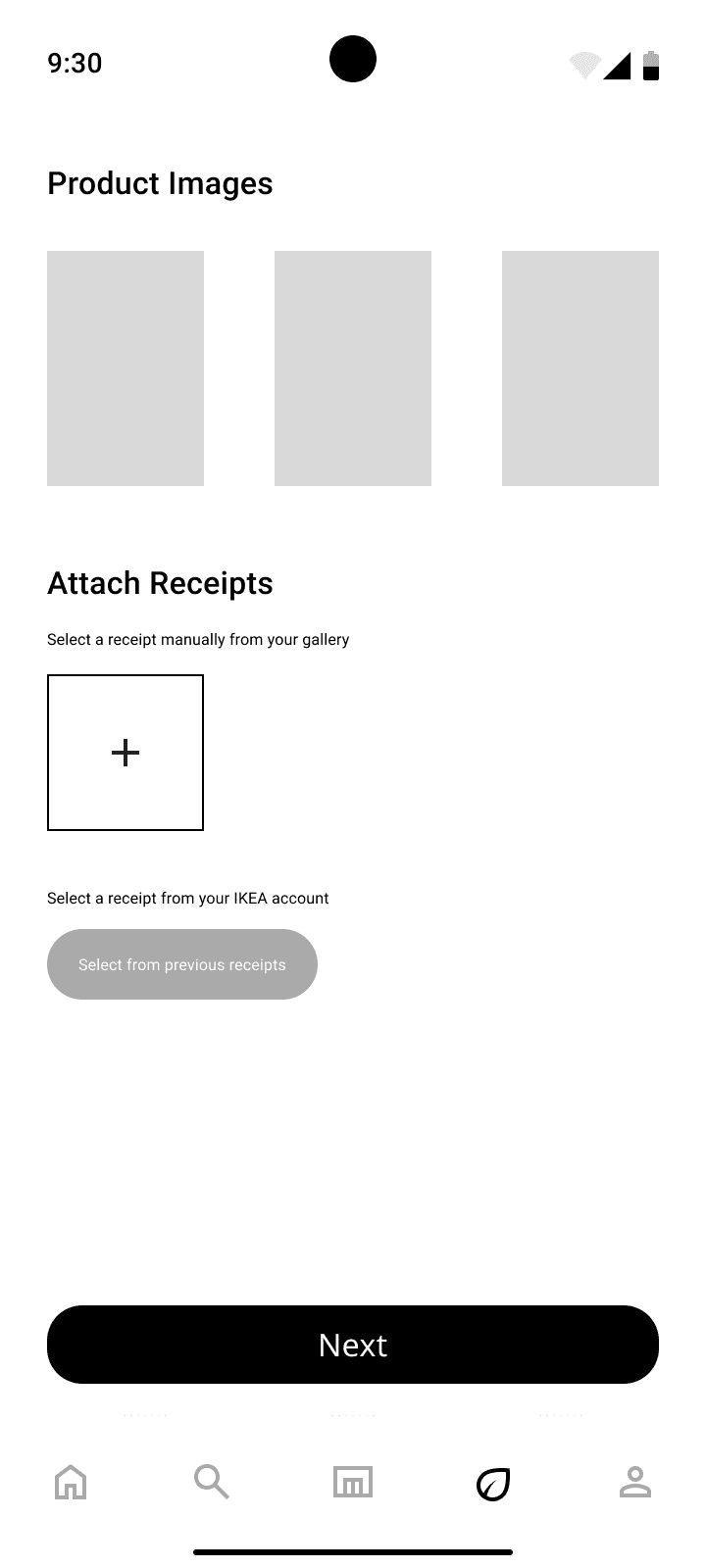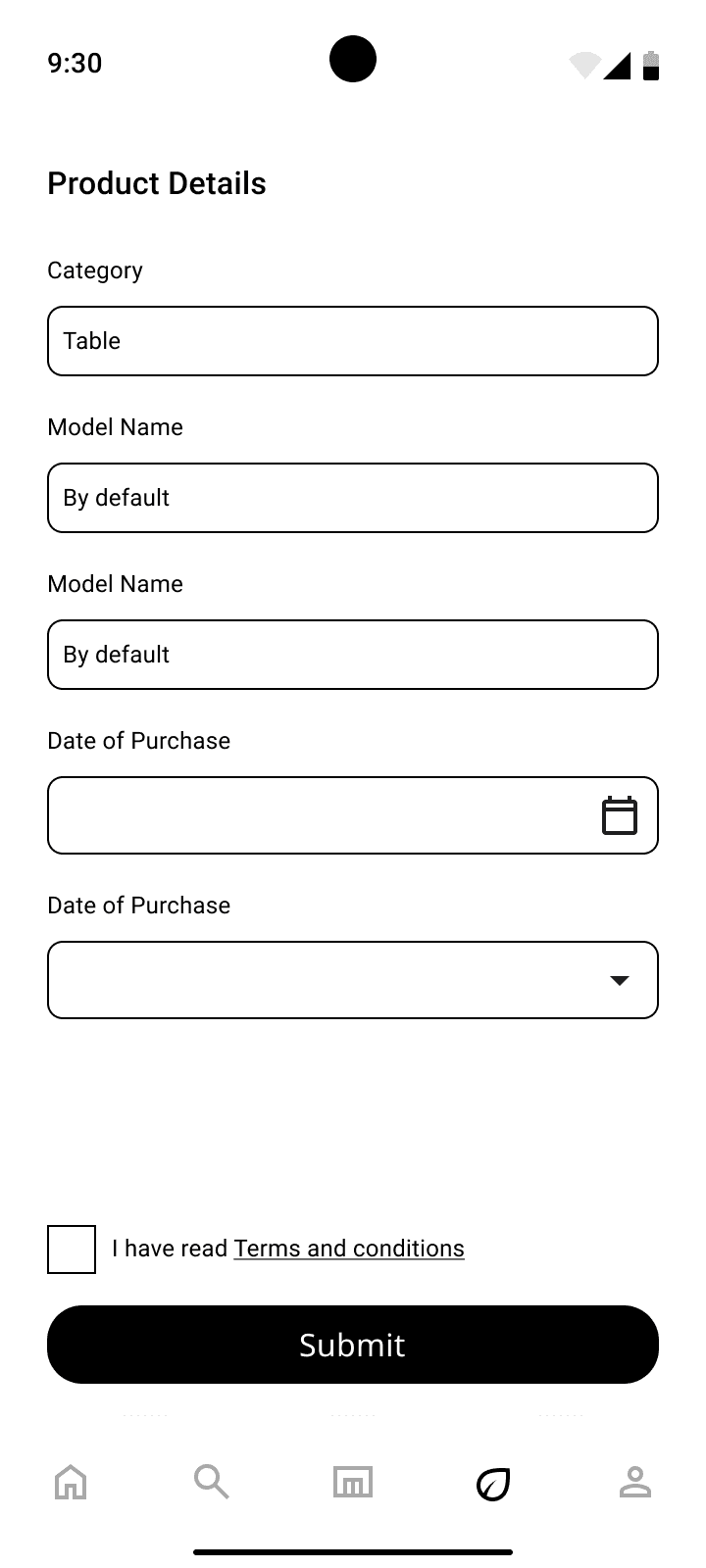Improving IKEA Sell-Back Program
Team: 5 people
|
My Responsibilities: UI Design(wireframing & Prototyping), Brainstorming, User Flow Creation
Prototype: IKEA's Sell Back Feature (Listing the product)
Context:
This project is based on a brief provided in a hackathon called Innovate48 Product Design Hackathon, hosted by Liftyz x Design Buddies. I collaborated with four amazing individuals - Divya Putrevu, Pavani Surapaneni, Koshiki Agarwal, and Youssef Ayman.
Continue reading to explore the problem statement we tackled and our solution approach.
Problem Statement:
The current IKEA sell-back program faces scalability challenges due to its manual form submission process. Additionally, it relies heavily on labour-intensive tasks such as product evaluation and online listing, which require a significant workforce. Our objective is to redesign the online store to address these challenges. We aim to make the sell-back program more efficient and user-friendly by enhancing scalability and automating key processes.
Solution:
We aim to make it effortless for IKEA to assess product quality for quick approval.
Sellers should have a streamlined process to provide detailed product information.
We propose integrating an AI or image recognition model into the sell-back process to identify uploaded images and assess product conditions for defects. Making use of IKEA's well-categorized products, users will be prompted to capture specific product components during image uploads. The AI will then generate a quoted price based on the assessment.
Recognizing the potential limitations of AI accuracy, upon receiving the AI-generated price, users can choose to proceed with the sell-back if satisfied. Alternatively, they have the option for further assessment. This hybrid approach aims to balance automation with user trust and satisfaction.
Looking ahead, advancements in AI technology could eliminate the need for manual assessment, streamlining the sell-back process even further.
Context:
This project is based on a brief provided in a hackathon called Innovate48 Product Design Hackathon, hosted by Liftyz x Design Buddies. I collaborated with four amazing individuals - Divya Putrevu, Pavani Surapaneni, Koshiki Agarwal, and Youssef Ayman.
Continue reading to explore the problem statement we tackled and our solution approach.
Problem Statement:
The current IKEA sell-back program faces scalability challenges due to its manual form submission process. Additionally, it relies heavily on labour-intensive tasks such as product evaluation and online listing, which require a significant workforce. Our objective is to redesign the online store to address these challenges. We aim to make the sell-back program more efficient and user-friendly by enhancing scalability and automating key processes.
Solution:
We aim to make it effortless for IKEA to assess product quality for quick approval.
Sellers should have a streamlined process to provide detailed product information.
We propose integrating an AI or image recognition model into the sell-back process to identify uploaded images and assess product conditions for defects. Making use of IKEA's well-categorized products, users will be prompted to capture specific product components during image uploads. The AI will then generate a quoted price based on the assessment.
Recognizing the potential limitations of AI accuracy, upon receiving the AI-generated price, users can choose to proceed with the sell-back if satisfied. Alternatively, they have the option for further assessment. This hybrid approach aims to balance automation with user trust and satisfaction.
Looking ahead, advancements in AI technology could eliminate the need for manual assessment, streamlining the sell-back process even further.
Context:
This project is based on a brief provided in a hackathon called Innovate48 Product Design Hackathon, hosted by Liftyz x Design Buddies. I collaborated with four amazing individuals - Divya Putrevu, Pavani Surapaneni, Koshiki Agarwal, and Youssef Ayman.
Continue reading to explore the problem statement we tackled and our solution approach.
Problem Statement:
The current IKEA sell-back program faces scalability challenges due to its manual form submission process. Additionally, it relies heavily on labour-intensive tasks such as product evaluation and online listing, which require a significant workforce. Our objective is to redesign the online store to address these challenges. We aim to make the sell-back program more efficient and user-friendly by enhancing scalability and automating key processes.
Solution:
We aim to make it effortless for IKEA to assess product quality for quick approval.
Sellers should have a streamlined process to provide detailed product information.
We propose integrating an AI or image recognition model into the sell-back process to identify uploaded images and assess product conditions for defects. Making use of IKEA's well-categorized products, users will be prompted to capture specific product components during image uploads. The AI will then generate a quoted price based on the assessment.
Recognizing the potential limitations of AI accuracy, upon receiving the AI-generated price, users can choose to proceed with the sell-back if satisfied. Alternatively, they have the option for further assessment. This hybrid approach aims to balance automation with user trust and satisfaction.
Looking ahead, advancements in AI technology could eliminate the need for manual assessment, streamlining the sell-back process even further.
Context:
This project is based on a brief provided in a hackathon called Innovate48 Product Design Hackathon, hosted by Liftyz x Design Buddies. I collaborated with four amazing individuals - Divya Putrevu, Pavani Surapaneni, Koshiki Agarwal, and Youssef Ayman.
Continue reading to explore the problem statement we tackled and our solution approach.
Problem Statement:
The current IKEA sell-back program faces scalability challenges due to its manual form submission process. Additionally, it relies heavily on labour-intensive tasks such as product evaluation and online listing, which require a significant workforce. Our objective is to redesign the online store to address these challenges. We aim to make the sell-back program more efficient and user-friendly by enhancing scalability and automating key processes.
Solution:
We aim to make it effortless for IKEA to assess product quality for quick approval.
Sellers should have a streamlined process to provide detailed product information.
We propose integrating an AI or image recognition model into the sell-back process to identify uploaded images and assess product conditions for defects. Making use of IKEA's well-categorized products, users will be prompted to capture specific product components during image uploads. The AI will then generate a quoted price based on the assessment.
Recognizing the potential limitations of AI accuracy, upon receiving the AI-generated price, users can choose to proceed with the sell-back if satisfied. Alternatively, they have the option for further assessment. This hybrid approach aims to balance automation with user trust and satisfaction.
Looking ahead, advancements in AI technology could eliminate the need for manual assessment, streamlining the sell-back process even further.
Context:
This project is based on a brief provided in a hackathon called Innovate48 Product Design Hackathon, hosted by Liftyz x Design Buddies. I collaborated with four amazing individuals - Divya Putrevu, Pavani Surapaneni, Koshiki Agarwal, and Youssef Ayman.
Continue reading to explore the problem statement we tackled and our solution approach.
Problem Statement:
The current IKEA sell-back program faces scalability challenges due to its manual form submission process. Additionally, it relies heavily on labour-intensive tasks such as product evaluation and online listing, which require a significant workforce. Our objective is to redesign the online store to address these challenges. We aim to make the sell-back program more efficient and user-friendly by enhancing scalability and automating key processes.
Solution:
We aim to make it effortless for IKEA to assess product quality for quick approval.
Sellers should have a streamlined process to provide detailed product information.
We propose integrating an AI or image recognition model into the sell-back process to identify uploaded images and assess product conditions for defects. Making use of IKEA's well-categorized products, users will be prompted to capture specific product components during image uploads. The AI will then generate a quoted price based on the assessment.
Recognizing the potential limitations of AI accuracy, upon receiving the AI-generated price, users can choose to proceed with the sell-back if satisfied. Alternatively, they have the option for further assessment. This hybrid approach aims to balance automation with user trust and satisfaction.
Looking ahead, advancements in AI technology could eliminate the need for manual assessment, streamlining the sell-back process even further.
Context:
This project is based on a brief provided in a hackathon called Innovate48 Product Design Hackathon, hosted by Liftyz x Design Buddies. I collaborated with four amazing individuals - Divya Putrevu, Pavani Surapaneni, Koshiki Agarwal, and Youssef Ayman.
Continue reading to explore the problem statement we tackled and our solution approach.
Problem Statement:
The current IKEA sell-back program faces scalability challenges due to its manual form submission process. Additionally, it relies heavily on labour-intensive tasks such as product evaluation and online listing, which require a significant workforce. Our objective is to redesign the online store to address these challenges. We aim to make the sell-back program more efficient and user-friendly by enhancing scalability and automating key processes.
Solution:
We aim to make it effortless for IKEA to assess product quality for quick approval.
Sellers should have a streamlined process to provide detailed product information.
We propose integrating an AI or image recognition model into the sell-back process to identify uploaded images and assess product conditions for defects. Making use of IKEA's well-categorized products, users will be prompted to capture specific product components during image uploads. The AI will then generate a quoted price based on the assessment.
Recognizing the potential limitations of AI accuracy, upon receiving the AI-generated price, users can choose to proceed with the sell-back if satisfied. Alternatively, they have the option for further assessment. This hybrid approach aims to balance automation with user trust and satisfaction.
Looking ahead, advancements in AI technology could eliminate the need for manual assessment, streamlining the sell-back process even further.
Our Process
User Flow
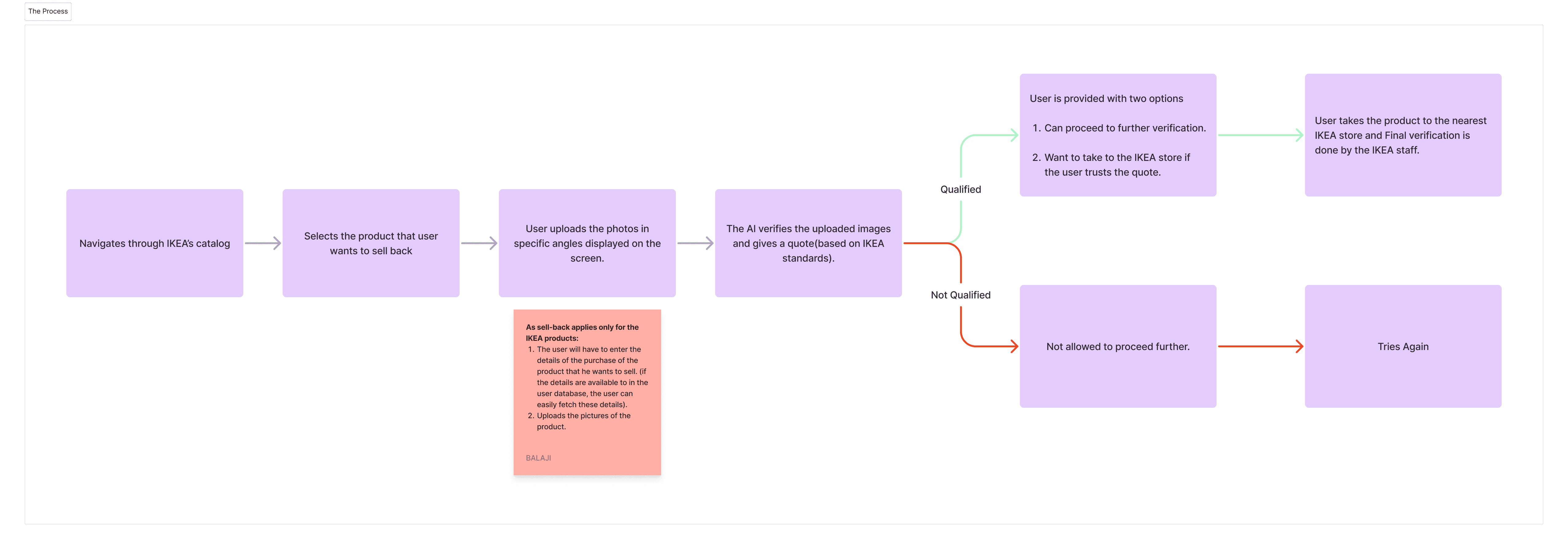





App Layout - Low Fidelity Screens
Components and Re-worked Screens
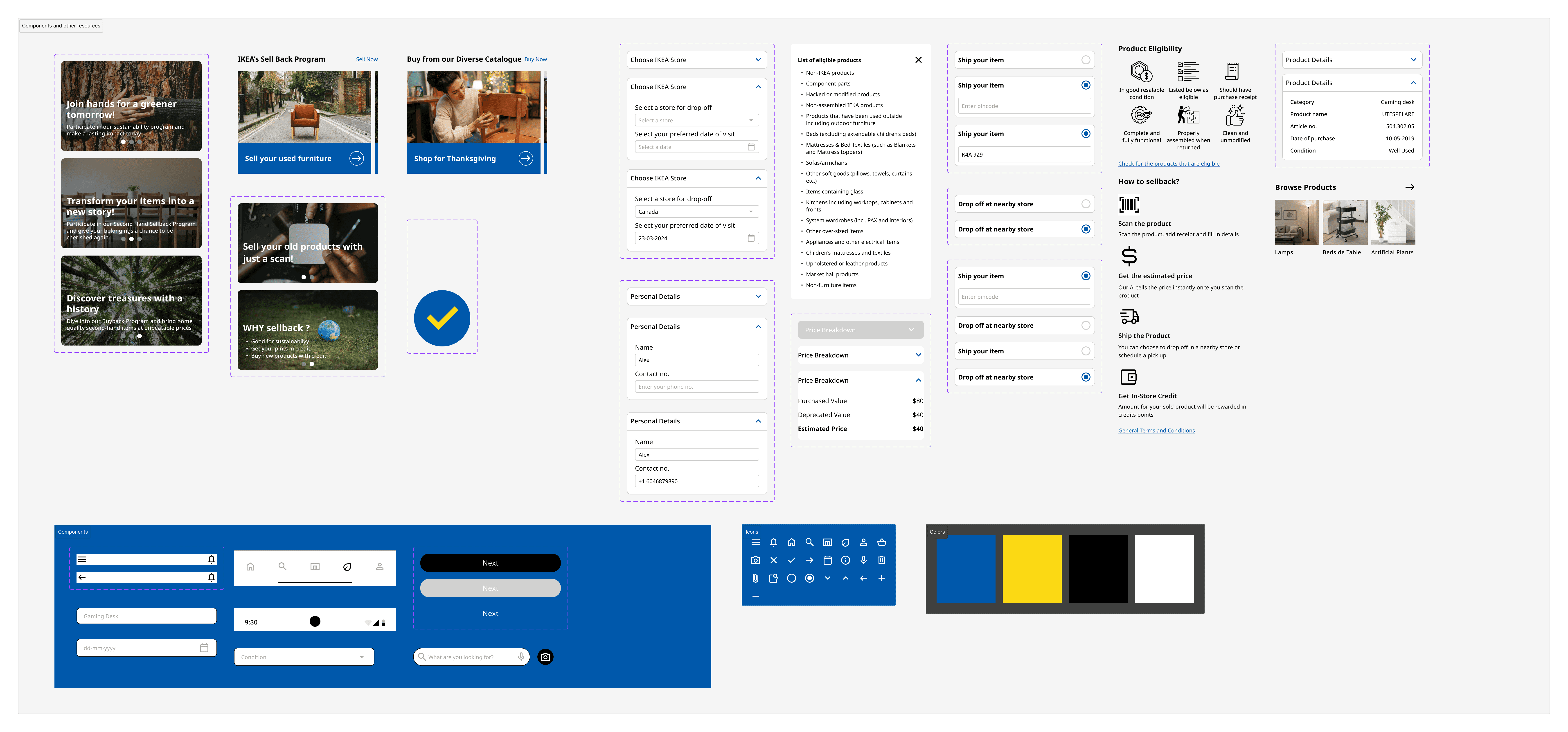





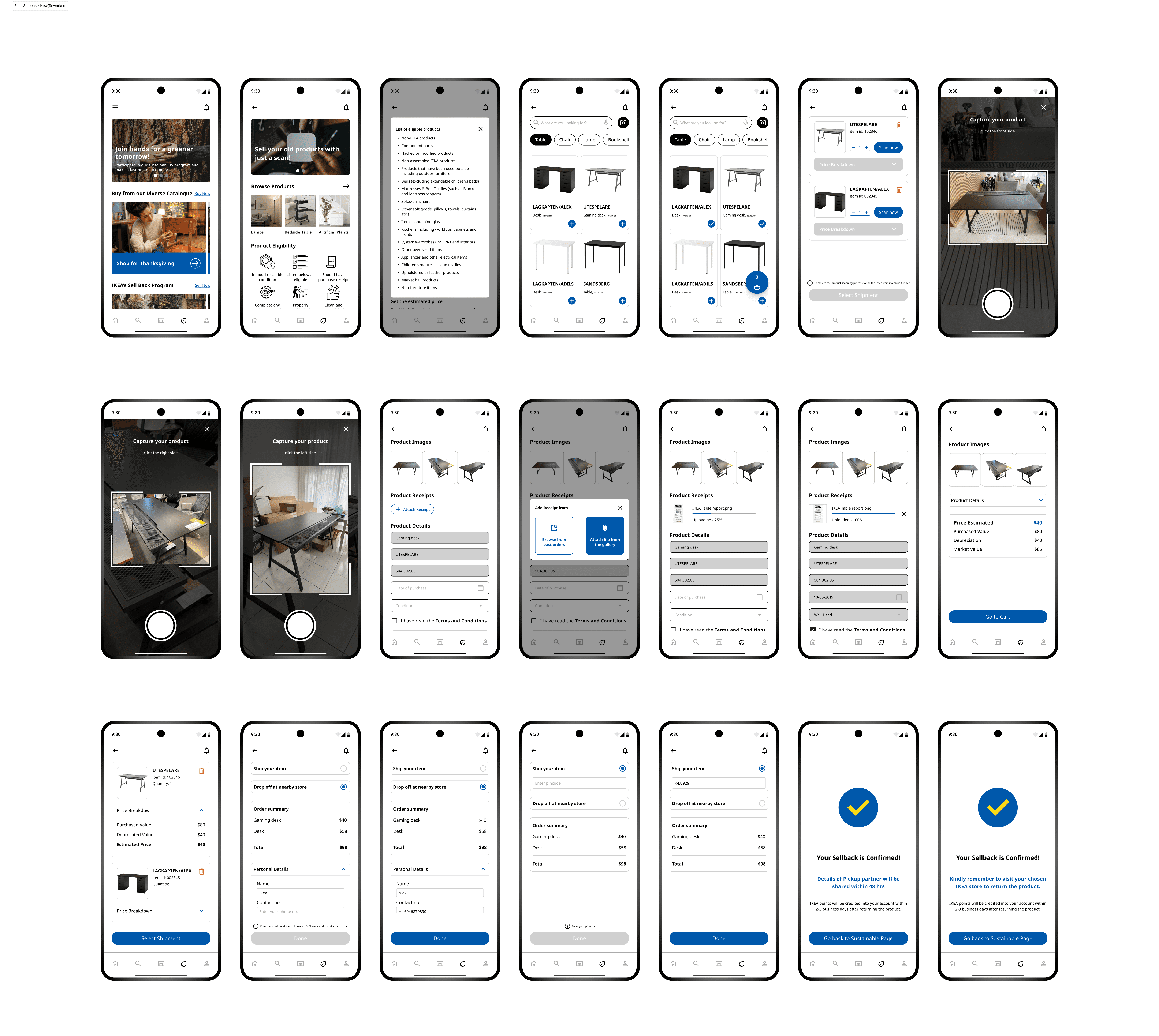





Reflection:
Participating in my first hackathon with an amazing team was an incredible learning experience. I'm thankful that I got this opportunity in my early days. Throughout the event, I learned a lot about problem-solving and collaboration. The process of brainstorming ideas and creating designs was challenging but fulfilling.
Looking ahead, I'm excited to explore ways to improve our proposed solutions, especially in automation. Overall, the hackathon was a fantastic opportunity for me to grow as a designer. Plus, I made some great new friends along the way!
Suggestion & Feedback
Your feedback is valuable! if you have any suggestions or improvements for this project, please feel free to share them with me. Your input helps me grow as a designer and improve the quality of my work. Click the button below to provide your feedback.
Made by
Made by
Made by
Made by


